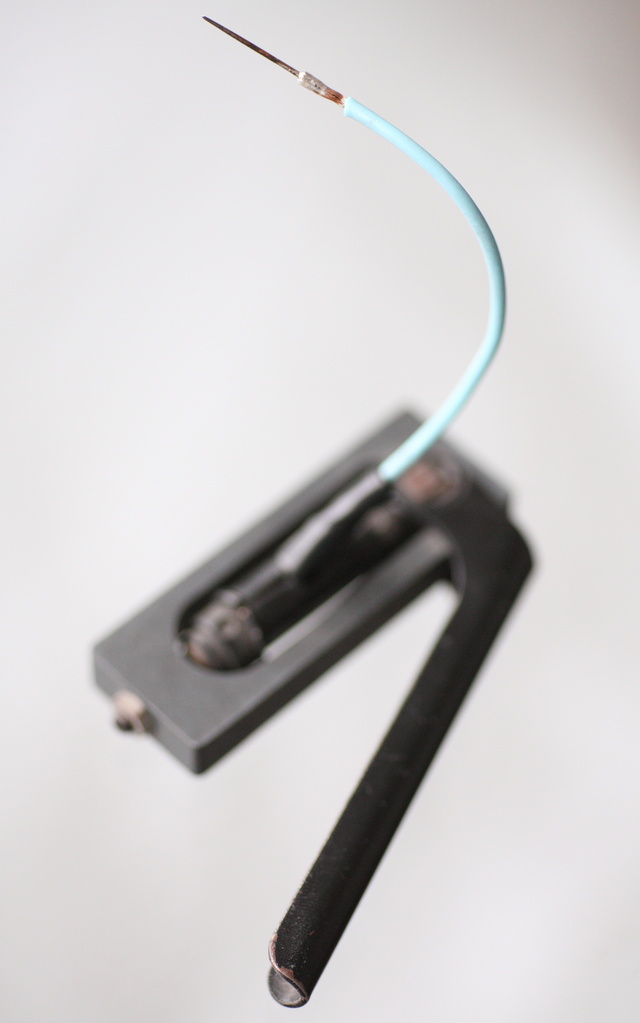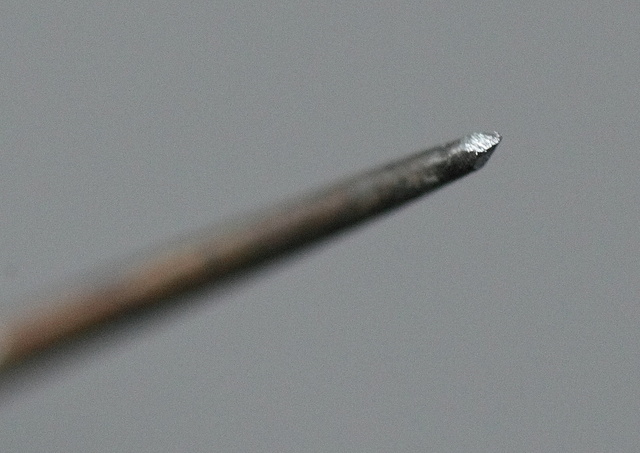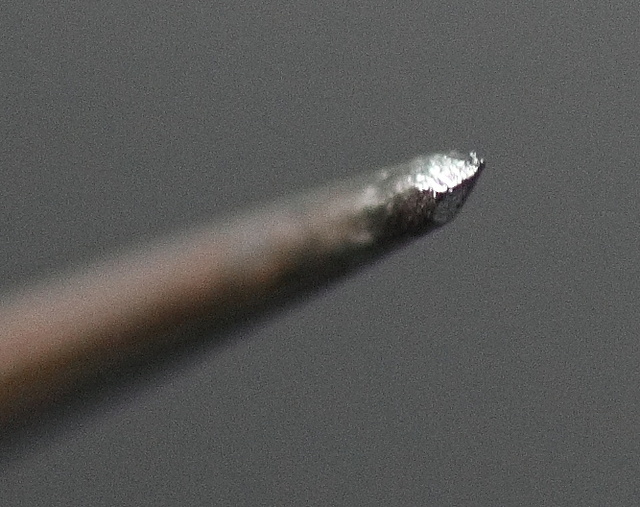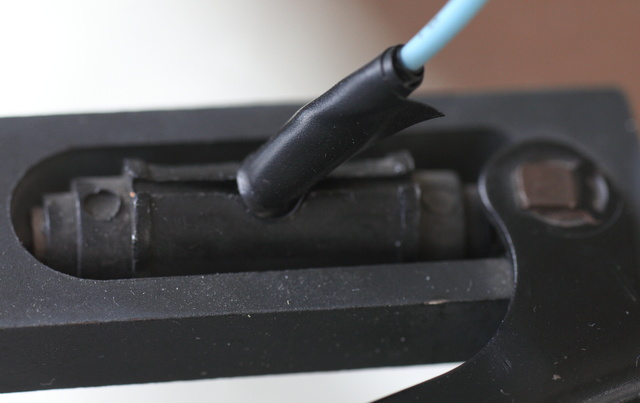It emerges that I have purchased three pistols; one in July 19974, another January 1981 and the third on October 1989.
I have reread the manufacturer’s instructions. There is no mention of sharpening the point.
Go figure. Kerching!
Where did you get this idea?
From scanned tunnelling microscopes (STMs). The resolution of these devices is so high because protrusions a few atoms thick project a far higher electric field gradient than expected (and quantum tunnelling falls off dramatically with distance). They only discovered this by crashing the STM needle into the sample. They thought the needle was ruined, but were shocked afterwards to find an image of the actual atomic grid on their screens, a level of resolution that was considered impossible. Jagged and very sharp points can project very concentrated electric fields. Air ionisation requires very high voltages.
I await advice on how to sharpen the pin.
Take the side of the matchbox which you normally use for cleaning your stylus and scrape it across the needle point in any direction. Or a small stone. Or other piece of metal. Anything hard, really. I normally use the file on my Leatherman. There's no need to dismantle the plastic casing or remove the needle if you use a needle file. Depending on the humidity and salt content of air where you live, the need to do this will vary in frequency. But even if you do it every week you are likely to notice a difference in the effectiveness of the zerostat.
I bought my zerostat in about 1984. It gradually lost its potency until it could barely produce a spark. I took it apart but did not have the knowledge back then to understand why it was moribund. Later when I was studying STM's I applied the theory to the needle and found the zerostat was better than new. The piezo-electrics don't seem to deteriorate at all. It's all in the needle point. Here's a picture of mine showing how it has looked for 20 years or more:
Device without plastic casing:
Needle point close-ups, with bonus swarf:
Electrical tape to reduce charge leakage:
As you can see, it's not necessary to sharpen very carefully. In fact, if you can get a bit of swarf to extend from the tip it will only help. Oxidisation elsewhere on the electical parts is welcome as it will reduce voltage leakage elsewhere. I put a bit of electrical tape around the solder where the wire meets the crystal tube as this helps to reduce sparks jumping to your hands and the metal chassis.
You know as soon as it is working well because if you spray it towards your nose you can smell the sea.
One word of warning: this device is designed to produce very high voltages. You could probably trash your phono stage, or even other electronics in your system if you allowed it to discharge into the arm tube or cartridge.





